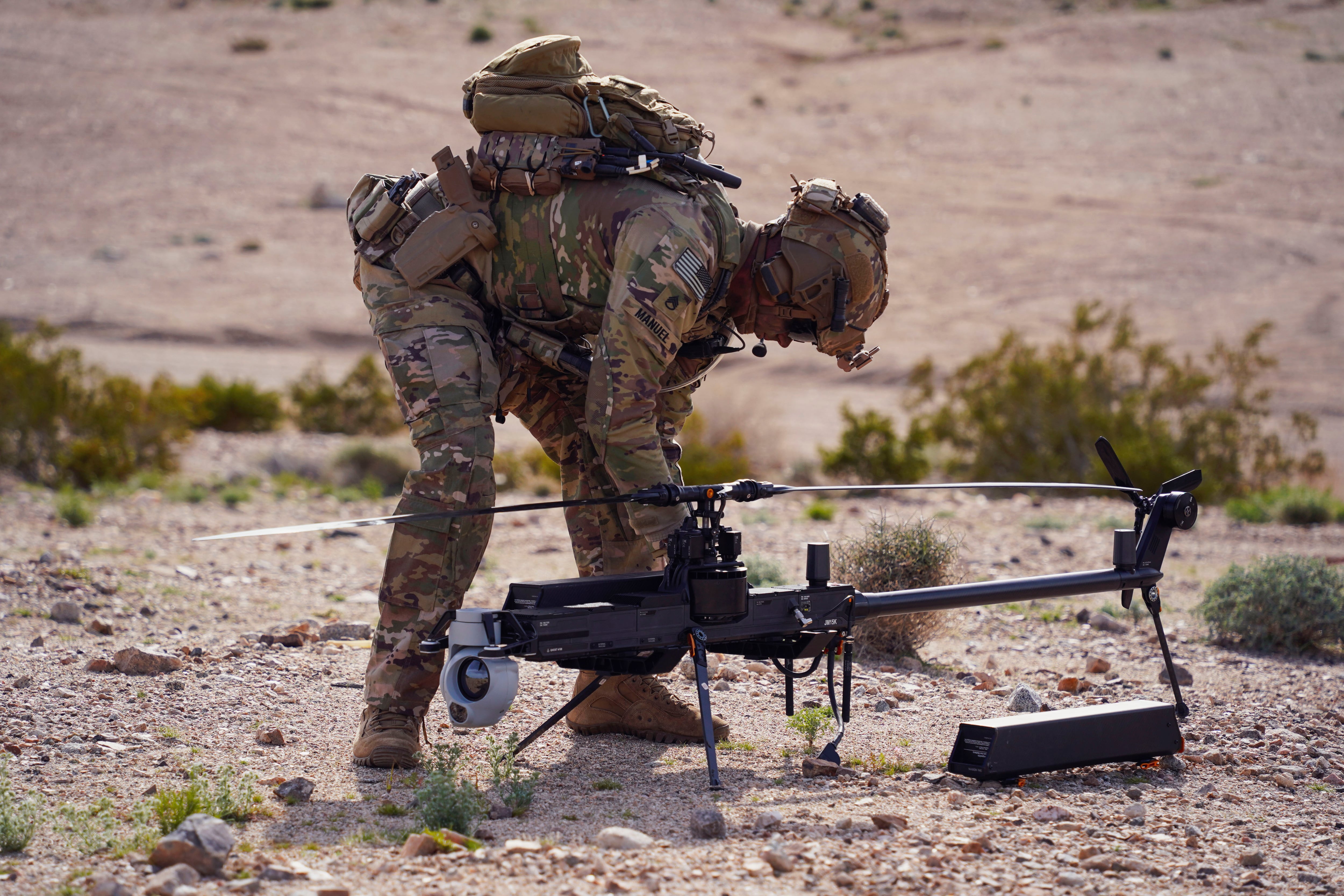As conflicts across the Middle East and in Eastern Europe have demonstrated, unmanned aerial systems, or UAS, are reshaping the dynamics of modern warfare, emerging as a pivotal technology alongside communication in military engagements.
In contemporary military operations, UAS are being tightly integrated into infantry tactics, used in new and creative ways for reconnaissance, leveraged for forward operating base defense, relied on to provide critical intelligence and deployed for data collection. Because UAS can autonomously operate in hazardous environments and undertake high-risk missions, they have revolutionized warfare by significantly enhancing operational safety and expanding tactical options for ground forces.
In response to China’s historical technological dominance in the UAS market and amid the technology’s rapid evolution, Congress has taken steps to foster technology development while addressing new potential dangers. Legislative measures have been introduced to support the development of domestic UAS capabilities.
H.R. 2864, the C-CCP Drone Act, would mandate the inclusion of equipment produced by Shenzhen Da-Jiang Innovations Sciences and Technologies Company Limited (DJI Technologies), the world’s largest drone manufacturer, on the Federal Communications Commission’s list of equipment that poses a risk to U.S. national security.
The threat of Chinese advancements
DJI and Autel, both Chinese companies, control more than 90% of the global drone market. In the mid to late 2000s, subsidized pricing allowed DJI to penetrate global markets rapidly, including within the U.S. and NATO countries, to the detriment of domestic manufacturers.
The ubiquity and cost advantages of Chinese drones have disrupted foreign markets while introducing security vulnerabilities in sensitive areas such as critical infrastructure, military bases and urban surveillance. Reports have surfaced of data from Chinese-made drones being transmitted back to servers in China, raising concerns about espionage and data security. China’s collaboration with Russia to enhance Russian FPV drone production capabilities could also pose a further challenge to the U.S. and NATO.
US countermeasures and investment
In this environment, ensuring the West’s UAS superiority on the battlefield will depend on the success of efforts to bolster domestic capabilities, increase investments in R&D and develop advanced technologies that can compete with and surpass those produced by China.
The Department of Defense has initiated multiple programs to bolster U.S.-based UAS manufacturers and support the development of a secure and reliable supply chain for critical components.
Meanwhile, private companies like Anduril, Shield AI and Edge Autonomy are leading the charge with new UAS solutions tailored for defense applications. These innovators are not only developing cutting-edge technology but also ensuring their products are free from foreign influence and data security dangers by manufacturing critical components such as cameras, gimbals, flight controllers, and radios onshore.
Private equity can further these efforts by strategically investing in innovative companies and technologies, driving the growth of domestic UAS innovation. Moreover, by supporting these companies’ efforts to develop onshore manufacturing processes and establish secure supply chains, private equity investment can help reduce dependence on foreign sources and enhance national security.
It is therefore paramount to invest in developing and deploying critical technologies and cyber tools to the warfighter that will be necessary to accelerate domestic UAS development and deployment.
Doctrine, training and safety standards
While much is happening on the production front, we also need to consider the impact of UAS on military operations, which will require significant adjustments. Military doctrine will need to continue to evolve to include new tactics, techniques and procedures for UAS-supported fire and maneuver. Following special operations’ lead in this domain, new protocols will have to be rapidly transitioned to the conventional forces.
Training programs must also change to focus on the operational skills required to manage UAS fleets, interpret real-time data and integrate UAS intelligence into broader operational contexts. This training should include ethical considerations related to privacy violations and rules of engagement in settings where civilian populations are often at risk.
Outlook
Innovations in artificial intelligence, machine learning and autonomous operations are certain to further enhance UAS capabilities, making them more efficient and versatile. AI is poised to play a significant role in the future of UAS by enabling drones to perform complex tasks with minimal human intervention and adapt to dynamic combat environments, improving their ability to detect and respond to threats. Autonomous operations will reduce the burden on human operators, allowing for more efficient and effective mission execution.
Soon, we can also expect to see UAS with extended operational ranges, improved stealth features and advanced payload capabilities. Integrating UAS with other emerging technologies such as augmented reality and cyber warfare tools will also create new tactical opportunities and challenges.
The integration of UAS with AI will also give ground troops enhanced situational awareness, as well as better coordination and decision-making in the field. Likewise, cyber warfare tools will enable UAS to disrupt enemy communications and infrastructure, providing a strategic advantage in modern conflicts.
As UAS technology continues to evolve and domestic drone production expands, it is crucial for military and industry leaders to closely monitor threats while fostering an entrepreneurial environment that prioritizes continuous innovation, rigorous training and doctrinal adaptation. Through collaboration, the potential of UAS can be fully realized, ensuring that military operations are as effective and efficient as possible while minimizing risks to combatants and civilians.
Florent Groberg is a vice president at AE Industrial within the firm’s Portfolio Strategy and Optimization Group. Groberg previously held key positions at Microsoft, Boeing and LinkedIn. Prior to that, Groberg was a captain in the U.S. Army, completing both U.S. Army Airborne and U.S. Army Ranger schools. Groberg received the Medal of Honor for his actions in combat operations in Afghanistan in 2012. He currently serves on the American Battle Monuments Commission, an appointment by the president of the United States.




